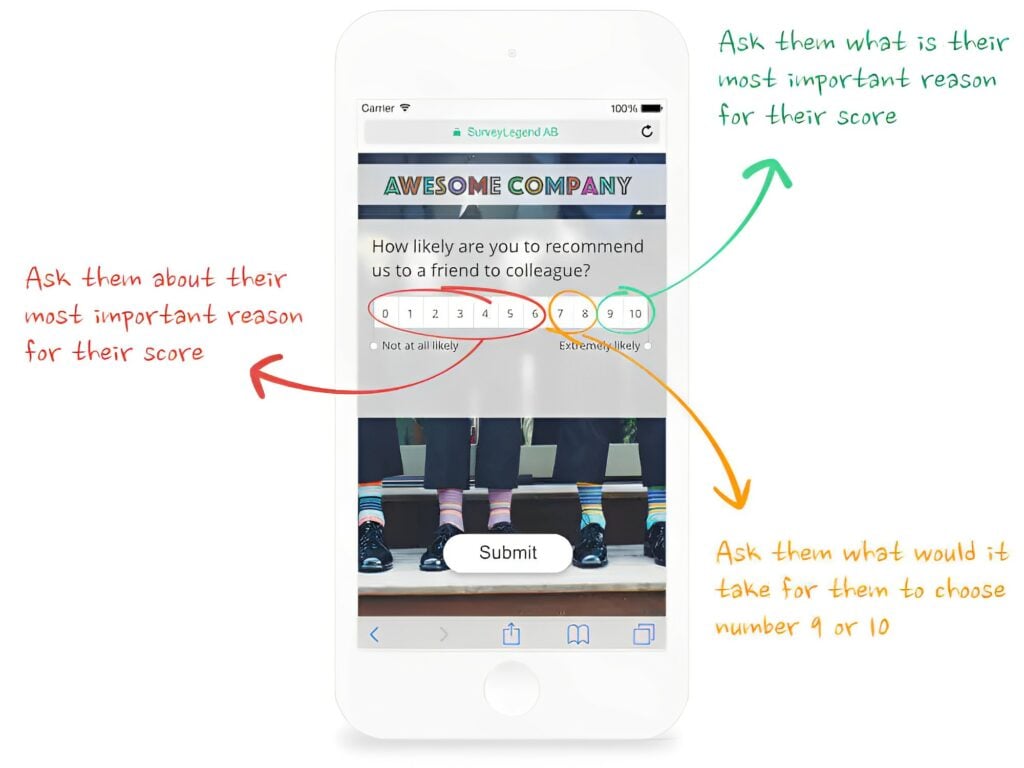Inclusive survey questions ensure all respondents feel respected and represented, making data more accurate and insightful. Beyond race and gender, thoughtful DEI survey design considers age, disability, identity, and cultural background to minimize bias and capture diverse perspectives. Strategies include training survey administrators, using inclusive language, offering multiple choices and write-ins, testing for clarity and sensitivity, using diverse images, avoiding stereotypes, prioritizing privacy, consulting DEI experts, and applying skip logic. Leveraging technology and templates streamlines collection, analysis, and follow-up, enabling organizations to identify gaps, address bias, and drive meaningful change toward a more inclusive workplace.
The world is changing, and today, inclusivity is more important than ever, with groups formerly seen as minorities expected to reach majority status by 2045. But inclusivity isn’t just about race, ethnicity, and gender; it also must take into account age, class, religious or political affiliation, sexual orientation, disability status, and more (there are a whopping 200+ terms in the ONGIG Diversity & Inclusion Glossary). Diverse companies benefit from inclusive survey questions that value employees from diverse backgrounds, helping to foster a diverse and inclusive workplace where everyone feels respected and empowered. In this blog, we aim to help you create inclusive survey questions that take DEI (diversity, equity, and inclusion) factors into consideration, to foster a diverse and inclusive workplace through thoughtful survey design.
Create your FREE inclusive survey, form, or poll now!
Why Create Inclusive Survey Questions?
Simply put, representation matters. Inclusivity demonstrates respect for all individuals and their identities, experiences, and backgrounds. By creating inclusive survey questions, you help ensure that a broader range of perspectives are considered, making your survey results more representative of the population you are studying. Surveys that consider diverse viewpoints are also more likely to yield valid results. Inclusive questions can capture the nuances of different experiences and perspectives, making the data richer and more insightful. These surveys also help organizations measure diversity and employee diversity, leading to a better understanding of the organization’s culture and identifying areas for improvement in inclusion, equity, and representation.
Inclusive surveys also help to minimize bias by ensuring that questions and response options do not favor or marginalize any particular group. This promotes fairness and objectivity in data collection. Inclusive survey questions help measure inclusion and improve the overall employee experience by identifying gaps, unconscious biases, and opportunities to foster a more supportive and engaging workplace. Further, being inclusive helps avoid cultural insensitivity or offensive language, ensuring that survey respondents from various cultural backgrounds feel respected and understood.
Types of Inclusive Survey Questions
When designing an inclusion survey, it’s important to use a variety of question types to gather feedback on all aspects of workplace culture and diversity and inclusion efforts. Diversity survey questions help measure the representation of different groups within your organization, ensuring that all voices are heard. Equity survey questions focus on uncovering any unnoticed inequalities or barriers to fair treatment, such as disparities in pay, access to resources, or opportunities for advancement. Inclusion survey questions are designed to explore how employees feel about the overall company environment—whether they feel respected, valued, and able to contribute fully. Belonging survey questions go a step further, measuring how strongly employees feel accepted and supported within the organization.
By combining these different types of survey questions, you can gain a comprehensive understanding of your workplace culture. This approach allows you to identify strengths and areas for improvement, ensuring that your diversity and inclusion survey captures the full spectrum of employee experiences. Remember, the goal is to create a survey that reflects the perspectives of all your employees, including those from underrepresented or marginalized groups, so you can foster a more inclusive and supportive workplace.
12 Ways to Create Inclusive Survey Questions
Creating inclusive surveys that consider diversity, equity, and inclusion (DEI) factors is essential to ensure that all respondents feel respected and represented. Providing context for each survey question helps respondents understand the purpose behind the questions, leading to more thoughtful and accurate responses. Workplace diversity survey questions and DEIB survey questions are essential tools for assessing inclusion, belonging, and equity within organizations. Here are some ways to create inclusive survey questions that respect various aspects of diversity and yield better data and higher response rates.
1. Educate Survey Administrators
This may seem like a no-brainer, but some survey administrators may not have ever focused on inclusivity and matters related to DEI. The leadership team and senior leadership team play a crucial role in setting the tone for inclusivity and must actively support DEI training for survey administrators to ensure these initiatives are prioritized and effective. If you’re creating an inclusive survey, be sure to train survey administrators to be respectful when discussing sensitive topics and handling survey-related issues. Be sure to read our blog How to Ask Sensitive Survey Questions for more information. For inspiration and best practices during warmer months, check out these 7 Summertime Survey Considerations & Examples.
2. Use Inclusive Language
Unintentionally leaving out a group, or forcing them to fit into a group, can be offensive. Here are some examples:
- When asking about race or ethnic groups, it’s not always black and white (pun intended). Many people identify with multiple races or ethnicities, so include an option to “Select all that apply.”
- When asking about sexual orientation (straight, gay, bisexual), do not include “gender identity.” Transgender and non-binary are not considered “orientations,” but rather how someone identifies, and should be in the “gender” category. Additionally, be sure to recognize sexual identity as a separate aspect from both gender identity and sexual orientation, and consider including it in your survey questions to ensure all individuals feel valued and included.
- Now, instead of simply asking “What is your gender?” you may consider asking “What is your gender or gender identity?” Today, it’s important to include options beyond just “male” and “female”, like “non-binary,” “prefer not to say,” or an open text field.
- Don’t assume a disabled person considers themselves disabled. Instead, carefully word your question similar to this: “Do you identify as a person with a disability or are you a person with accessibility needs?”
3. Offer Multiple Choices for Gender Identity
Some survey questions are notorious for not providing an ‘out’, which can leave some participants perplexed. Always offer an “Other” or “Prefer not to say” option. You can also include a write-in option for respondents to specify things that the provided choices may not cover. By offering multiple choices and write-in options, you ensure that underrepresented groups and people from different backgrounds can accurately represent themselves, supporting diversity and inclusion efforts. Many of these types of survey questions come up in the demographic category, so be sure to check out our blog, 15 Demographic Survey Questions and How To Ask Them.
4. Test for Clarity and Sensitivity
It’s always a good idea to pre-test your DEI survey with a diverse group of individuals to ensure it is clear, sensitive, and respectful of all identities and backgrounds. Pre-testing with diverse groups can also help identify and address potential inclusion gaps, ensuring that the survey does not overlook areas where diversity and inclusion may be lacking. Be sure to listen to their suggestions and take their recommendations to heart.
5. Use Inclusive Images to Reflect an Inclusive Work Environment
When creating a survey with images, ensure that you use photos and icons that represent a diverse range of identities and backgrounds. Including images that reflect a diverse workforce helps reinforce inclusivity and ensures that all employees feel represented. Of course, don’t be too obvious; the best way to show diversity is naturally. As you can see in the SurveyLegend example below, numerous races are represented in this question. The survey isn’t even about DEI or inclusivity; it’s about teachers. However, it’s always good practice to be inclusive with survey images.

6. Avoid Stereotyping
Stereotyping can lead to skewed results and misrepresent the views and experiences of respondents. While stereotypes based on gender, race, income, and so on may seem obvious, there are other ways stereotypes can be introduced into a survey – and they can be negative or positive. Avoiding stereotypes is essential for addressing diversity in survey design, as it ensures that all groups are represented fairly and accurately.
For example, consider this one based on age groups:
Which of the following best describes the typical behavior of millennials? Select one:
- Entitled and lazy
- Tech-savvy and innovative
- Disinterested in traditional values
In this example, the first option perpetuates a negative stereotype about millennials, while the second option promotes a positive stereotype. Both options can lead to biased responses. To avoid stereotypes, be sure to frame questions and answer choices in a way that avoids reinforcing stereotypes or assumptions about certain groups.
7. Prioritize Survey Privacy and Anonymity
If true, always assure respondents that their data will be kept confidential and anonymous to encourage honesty. Create an introduction page or survey welcome page on your online surveys that highlights this to help put participants at ease and ensure the best results for you.
8. Consult with DEI Experts
DEI is a sensitive matter. Not sure if you’re doing it right? Consult with DEI experts or organizations to review and advise on survey questions and content. DEI experts can also assist in designing and reviewing effective DEI surveys, ensuring your organization can accurately measure and improve diversity, equity, inclusion, and belonging initiatives. ONGIG is one organization that will review what you’re doing and make sure you’re doing it right. Also, be sure to read our blog on Asking Sensitive Questions on a Survey.
9. Consider Intersectionality
Acknowledge that individuals may have multiple intersecting identities. For example, a person may be black and also disabled. Their experiences could be different from those of others who are black but not disabled, or disabled but not black. Considering intersectionality helps ensure that the experiences of diverse groups are represented in survey questions. Be sure to design questions that respect these complexities.
10. Consider Cultural Sensitivity
Be aware of cultural differences and sensitivities when designing your questions. What may be acceptable or sensitive in one culture may differ from another. Being culturally sensitive in survey design helps promote diversity and boost diversity within organizations by ensuring all voices are respected and included. While some insensitive questions are obvious, others are not. For example, on a food survey, asking “Have you ever tried exotic ethnic foods, like sushi or curry?” may seem harmless; however, it could be perceived as culturally insensitive because it refers to foods from diverse cultures as “exotic,” implying that they are unusual or foreign. This can reinforce stereotypes.
11. Offer Skipping and Skip Logic
Allow respondents to skip questions that may not apply to them based on their demographic characteristics. This helps ensure they will continue with the survey even if they get stuck on a question they can’t, or don’t want, to answer.
You can also employ survey skip logic to make your survey smarter by guiding participants to different questions based on their responses. SurveyLegend makes it easy to include skip logic based on participant responses. The example below highlights how different responses would lead to different outcomes.

12. Monitor Survey Response Bias and Allow Feedback
It’s important to regularly review survey data to identify potential survey response bias or underrepresentation of certain groups and make adjustments as necessary. Employee feedback plays a crucial role in identifying response bias and improving diversity efforts, as it provides direct insights into the experiences and perspectives of underrepresented groups. Only this way will you have a true representation of your survey audience.
You should also consider including a way for respondents to provide feedback on the survey’s inclusivity and suggest improvements. Their input and ideas could make your next survey and future surveys that much better.
Using Technology to Enhance Inclusive Surveys
Leveraging technology can significantly improve the effectiveness and reach of your inclusion survey. Modern online survey platforms make it easy to create, distribute, and analyze diversity and inclusion surveys, helping you collect data efficiently and securely. Features like anonymous feedback, customizable question types, and real-time analytics empower organizations to gather actionable insights while protecting employee privacy.
Technology also helps combat survey fatigue by allowing employees to complete surveys at their convenience, whether on a computer or mobile device. Automated reminders and follow-ups can boost response rates, ensuring you hear from a broad cross-section of your workforce. Many platforms offer ready-made inclusion survey templates, which can be tailored to your company culture and specific needs. By using these tools, you can streamline the process of measuring diversity and inclusion, making it easier to identify trends, track progress, and implement meaningful change.
Addressing Contrary Opinions in Inclusive Surveys
In any inclusive workplace, it’s natural for employees to have differing perspectives, and this will be reflected in your survey results. Addressing contrary opinions is a key component of fostering a positive workplace culture and building an inclusive environment. When analyzing feedback, approach disagreements with empathy and curiosity—seek to understand the reasons behind differing viewpoints, rather than dismissing them.
Encourage open, respectful dialogue among employees, and create safe spaces where everyone feels comfortable sharing their thoughts. By valuing diverse perspectives, you demonstrate your commitment to fostering diversity and building an inclusive workplace. Listening to and addressing contrary opinions not only helps resolve misunderstandings but also strengthens trust and collaboration across your organization.
Creating an Inclusive Survey Template
A well-designed inclusion survey template is essential for gathering meaningful feedback from all your employees, regardless of their gender identity, sexual orientation, or cultural background. Start by including questions that assess key areas such as the promotion and evaluation process, career advancement opportunities, and employee growth. Make sure your survey also evaluates the overall workplace culture and the effectiveness of your inclusion efforts.
Use inclusive language throughout, and provide options for write-in responses so employees can share their unique perspectives in their own words. Collect demographic information thoughtfully, ensuring that all employees feel represented and respected. You can use a diversity and inclusion survey template as a starting point, then customize it to fit your organization’s specific needs and goals. By gathering feedback on these critical areas, you’ll gain valuable insights to inform your ongoing diversity and inclusion initiatives.
Using Inclusive Survey Questions to Drive Change
Inclusive survey questions are more than just a tool for measurement—they’re a catalyst for positive change within your organization. By gathering feedback on workplace culture, diversity, and inclusion, you can identify gaps and opportunities for improvement. It’s important to communicate the purpose of the survey to employees, assure them of confidentiality, and share actionable insights and recommendations based on the results.
Once you’ve collected and analyzed the data, develop a clear plan for implementing changes and tracking progress over time. Use metrics such as employee engagement, retention, and diversity indicators to measure the impact of your efforts. By acting on the feedback from your diversity and inclusion survey, you can create a more inclusive workplace where all employees feel valued and empowered—leading to greater organizational success and a stronger, more engaged workforce.
Conclusion
Creating inclusive surveys is not just a matter of courtesy; it’s a best practice that helps ensure the accuracy, fairness, and ethical integrity of your research. Inclusive surveys can also help organizations improve their hiring process, ensure equal opportunities for all candidates and employees, and foster an inclusive culture where everyone feels valued and supported. It helps gather more complete and representative data, which can lead to more informed decisions and better outcomes for all stakeholders. Of course, no matter how careful you are when writing questions, mistakes or oversights can happen. Be sure to check out our blog on creating DEI surveys in the workplace for more important tips. Ready to create your inclusive survey now? Start with our free survey maker today!
Do you make a habit of creating inclusive survey questions? Have you ever been offended by a survey question? Let us know in the comments!
Create your FREE inclusive survey, form, or poll now!
Frequently Asked Questions (FAQs)
What is an inclusive survey?
An inclusive survey is designed and conducted in a way that respects and includes the perspectives, experiences, and identities of all individuals, regardless of their background, characteristics, or identities. Inclusivity in surveys is important to ensure that the data collected accurately represents the diversity of the population being studied and to avoid biases or discrimination.
What is DEI?
DEI stands for Diversity, Equity, and Inclusion. It is designed to capture the culture of organizations that manage diverse workforces and work toward providing the opportunity for everyone to succeed and participate regardless of their background.
How do you avoid stereotypes when creating surveys?
Awareness is the first step in avoiding stereotypes. Educate yourself and your team about common stereotypes associated with various demographic groups (e.g., race, gender, age, religion) so that you don’t unknowingly introduce them into your survey questions. You should also pilot test your survey with a diverse group of individuals to identify any potential issues related to stereotypes or bias in the questions.
What are employee resource groups, and how do they support inclusion?
Employee resource groups (ERGs) are voluntary, employee-led groups that bring together individuals with shared characteristics, interests, or life experiences. ERGs play a vital role in supporting inclusion by providing a platform for employees to connect, share experiences, and advocate for positive change. They help foster a sense of belonging and contribute to promoting diversity, equity, and inclusion within the organization.
How can organizations promote diversity through surveys?
Organizations can promote diversity by using surveys to gather feedback on workplace culture, identify gaps in representation, and assess the effectiveness of diversity initiatives such as employee resource groups. By asking meaningful questions and analyzing the results, organizations can develop targeted strategies to address inclusion challenges and demonstrate a commitment to fostering a diverse and inclusive environment.
What are some common inclusion challenges organizations face?
Common inclusion challenges organizations face include unconscious bias, lack of representation in leadership, limited support for employee resource groups, and insufficient communication about diversity initiatives. Addressing these challenges requires leadership commitment, regular assessment through surveys, and proactive efforts to create an inclusive workplace for all employees.



